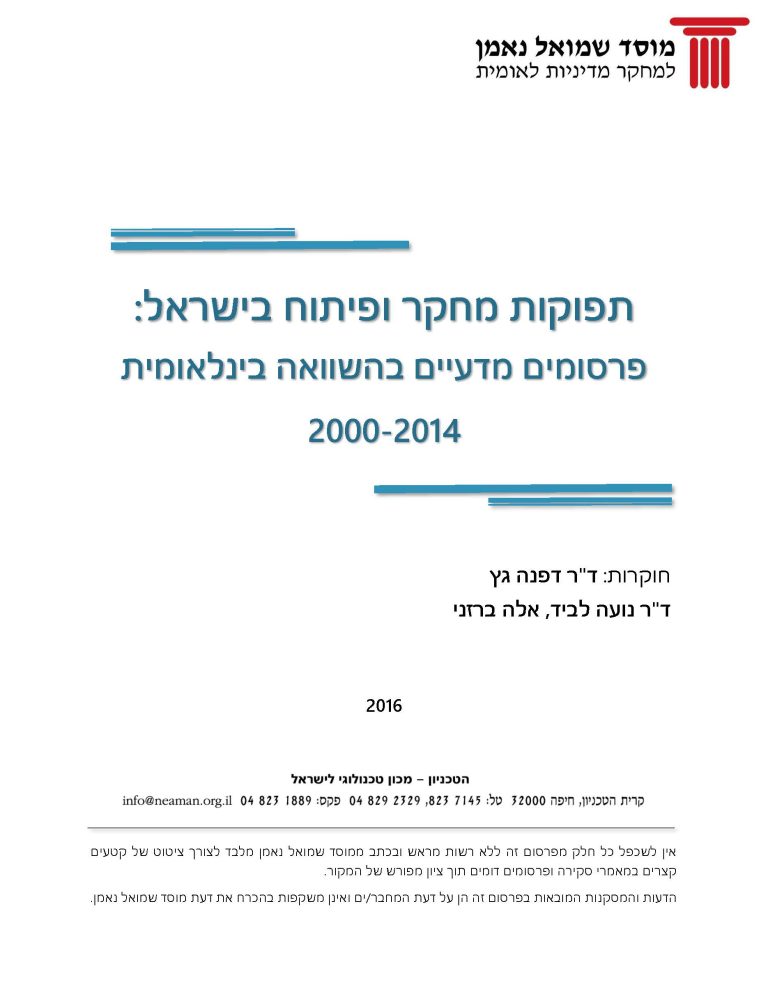This is the third in a series of studies financed by the Samuel Neaman Institution and the National Council for R&D (NCRD). The study’s findings are as follows:
International comparison indicates that Israel’s ranking continues a downward trend in various quantitative indices: number of publications, number of publications per capita, its share in global and OECD publishing, and its growth rate. This decrease stems from both Israel’s internal factors (low growth rate that actually leads to stagnation in the number of publications and in particular in the number of publications per capita) and global factors.
Israel shows an increase in all scientific impact indices; however, this increase is not in pace with the rate of increase in other countries, and therefore, Israel’s ranking among the countries that published at least 0.5% of the world’s publications is descending.
An analysis by area shows that in comparison to the world, Israel gives a higher priority to the areas of mathematics, psychology, and neuroscience and a lower priority to those of energy, environment studies, engineering, chemical engineering, and materials. An analysis of the areas by the average citations index shows that in most of the areas Israel’s ranking is not high, although an analysis of individual citations components reveals that Israel displays excellence in a considerable proportion of these areas. The most outstanding area in Israel, according to all the quality parameters tested, is computer science.
A review of publications in the Middle East countries shows a clear trend of narrowing gaps between Israel and its neighbors in both the number of publications and citations indices, although today most of these gaps remain wide. This trend is steeply increasing and encompasses many different areas.












